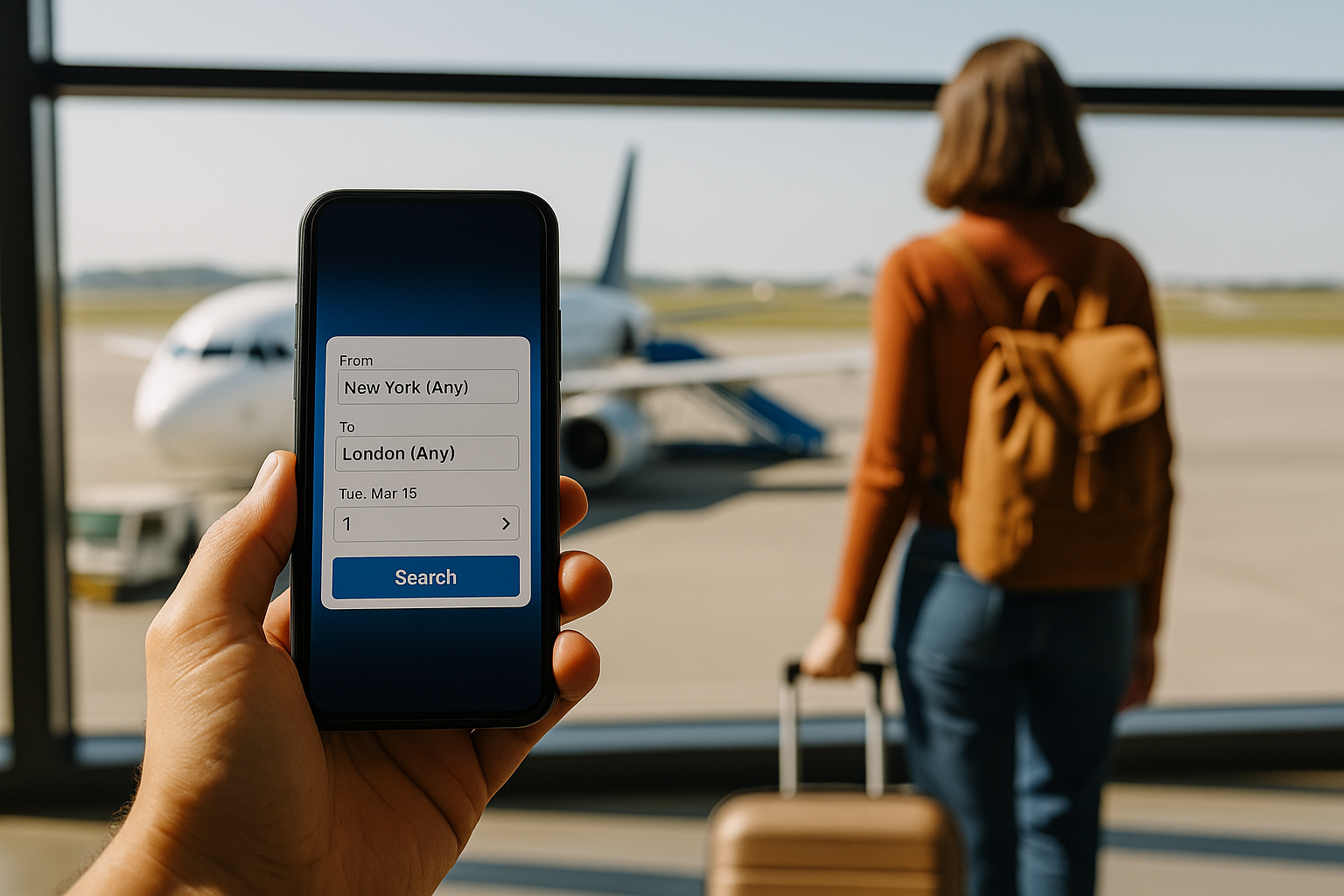Flights are often one of the biggest travel expenses—but they don’t have to be. With the right approach, you can consistently find great flight deals and reduce your travel costs significantly. In this post, you’ll learn how to book cheap flights like a pro, using smart tools, search strategies, and travel flexibility.
Be Flexible with Dates and Times
Flexibility is one of the most powerful ways to save money on airfare.
Tips:
- Fly on weekdays (especially Tuesdays and Wednesdays)
- Avoid holidays and peak seasons
- Choose early morning or late-night flights for better rates
- Use a flexible date search when available
Use Flight Comparison Tools
Flight search engines compare fares across multiple airlines and booking sites so you can find the lowest prices quickly.
Best tools:
- Skyscanner: Great for flexible travelers. Use “Cheapest Month” and “Everywhere” search.
- Google Flights: Powerful filters and a visual calendar of lowest fares.
- Momondo: Often finds lesser-known or regional airline deals.
- Hopper: Predicts price trends and tells you when to book.
Set Price Alerts
Let the tools do the work. Set fare alerts to get notified when prices drop for your preferred route.
How to do it:
- Use Google Flights or Skyscanner to track specific dates
- Use Hopper or Kayak for mobile notifications
- Be ready to book quickly when a deal shows up
Search in Incognito Mode
Some booking sites may use cookies to increase prices when they detect repeated searches for the same route.
Solution:
- Open a new incognito/private browser window
- Clear your browser cookies
- Compare searches across devices or networks
Book at the Right Time
There’s no exact rule, but general patterns suggest that booking 1 to 3 months in advance for domestic flights, and 2 to 6 months for international ones, yields the best prices.
Bonus tip:
Tuesdays and Wednesdays are often cheaper days to book (and to fly).
How Budget Airlines Can Unlock Big Savings
If you’re flexible and willing to skip some of the frills, budget airlines can drastically reduce the cost of your flights. These low-cost carriers operate in nearly every region of the world and are especially great for short-haul or regional trips.
Why they’re cheaper:
Budget airlines save money by cutting extras—like in-flight meals, checked baggage, and entertainment. This lean approach lets them offer base fares that are often a fraction of traditional airlines.
Popular budget airlines around the world:
- Europe: Ryanair, EasyJet, Wizz Air
- Asia: AirAsia, Scoot, VietJet Air
- Americas: JetBlue, Southwest, Spirit
- Oceania: Jetstar, Tigerair
- Africa: FlySafair, Fastjet
Tips for using budget airlines wisely:
- Always read the fine print. Fees for baggage, seat selection, and check-in can add up.
- Pack light to avoid luggage charges. A well-packed carry-on can go a long way.
- Bring your own snacks and entertainment.
- Double-check airport locations—some budget airlines use secondary airports farther from the city.
- Use price aggregators like Skyscanner to compare budget and full-service options.
Flying budget doesn’t mean sacrificing comfort—it means prioritizing value. With smart packing and a flexible attitude, budget airlines can stretch your travel funds further and help you reach more destinations.
Consider Nearby Airports
Flying into or out of alternate airports can save you a lot—especially in big cities with multiple hubs.
Examples:
- Try flying to Oakland instead of San Francisco
- Paris Beauvais instead of Charles de Gaulle
- Use “Nearby Airports” on Skyscanner or Momondo
Use Points and Airline Miles
Sign up for frequent flyer programs and travel credit cards to accumulate points or miles for free flights or upgrades.
Options include:
- Booking flights through airline alliances
- Using reward portals
- Redeeming credit card miles
- The Power of Flight Hacking and Open-Jaw Tickets
- Flight hacking isn’t about breaking the rules—it’s about working smarter within the system. If you’re planning a multi-city trip or looking to save on long-haul routes, a few advanced booking strategies can open new possibilities.
- What is flight hacking?
- It’s the use of alternative booking tactics to save money, such as splitting tickets, using hidden-city routing, or booking with regional airlines separately.
- Examples of flight hacks:
- Open-jaw tickets: Fly into one city and return from another (e.g., São Paulo in, Rio de Janeiro out).
- Hidden city ticketing: Book a flight with a layover in your desired destination and skip the final leg (only with carry-on and one-way tickets).
- Combining airlines manually: Book one leg with a budget airline and the return with another for cheaper fares.
- Multi-city searches: Use Google Flights or Kiwi.com to create custom routes with creative stopovers.
- Things to keep in mind:
- Always leave buffer time if combining separate tickets.
- Don’t use hidden-city ticketing on round trips or with checked bags.
- Be aware of visa/transit rules when crossing borders on separate itineraries.
- When used ethically and carefully, flight hacking can help you uncover creative—and significantly cheaper—ways to get where you want to go.
Watch for Error Fares
Error fares happen when airlines or agencies mistakenly publish very low prices. These can offer massive savings if you catch them in time.
Where to find them:
- Follow sites like Secret Flying, The Flight Deal, or Airfarewatchdog
- Join newsletters and Telegram/WhatsApp alert groups
Book One-Way Tickets Separately
Sometimes booking two one-way tickets (even with different airlines) is cheaper than a round-trip ticket. This also allows for more flexibility and creativity in your route planning.
Final Thoughts
Finding cheap flights takes curiosity, timing, and a few tricks—but once you master it, you’ll stretch your travel budget further than ever. With these strategies, you’ll be able to explore more places, more often, and with more peace of mind.
Call to Action
Want to fly smarter? Save this post and subscribe to Mente Viajante for more tips on affordable adventures, planning hacks, and real-world travel insights.

